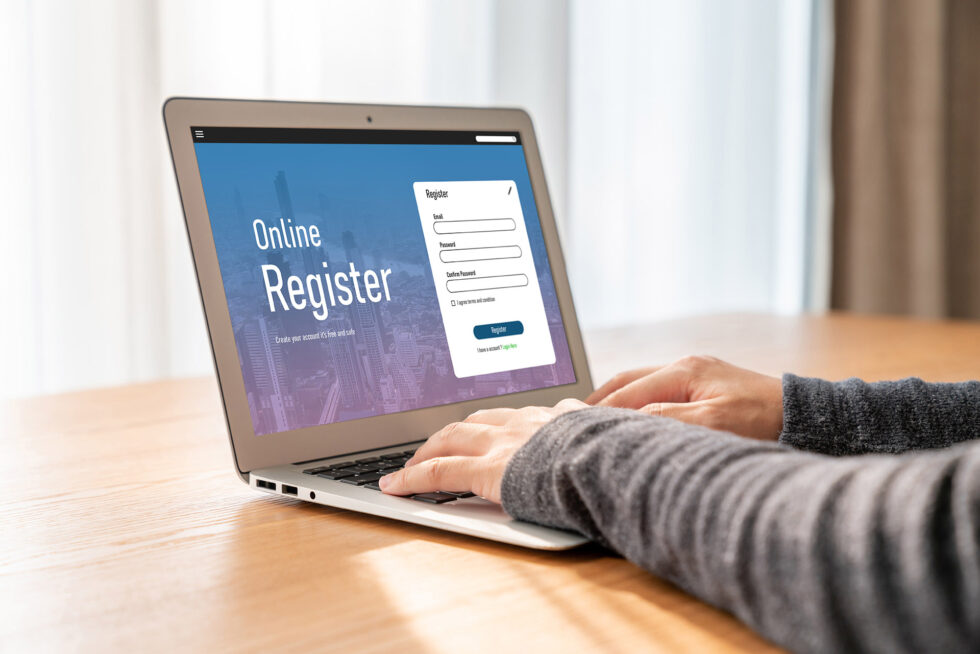Accessibility and inclusion are fundamental considerations when organizing events, as they ensure that all individuals, regardless of their abilities, can participate fully. Successful events attract a diverse audience and create an environment where every participant feels welcomed and valued, but it can be confusing knowing where to start.
In this article, we focus on registration forms, often the initial point of contact for potential attendees, and look at practical tips on achieving inclusivity in this area.
WHAT IS ACCESSIBILITY?

Before we dive into registration forms, it’s important to understand what accessibility means in this context.
Accessibility refers to designing and creating products or services that people with disabilities can use. For example, a visually impaired person may require screen readers to navigate a website or form. Or someone with hearing loss may need captions or sign language interpreters to engage effectively with your event.
In the context of event registration forms, it means creating forms that can be easily used and completed by individuals with various disabilities, such as ensuring any images have alternative text or descriptions so that audio screen readers can interpret them to help the user complete the form accurately.
TEN TIPS FOR ENSURING ACCESSIBILITY IN EVENT REGISTRATION FORMS

- Use clear and concise language: Avoid using complex or technical jargon that can be difficult for some individuals to understand. For example, instead of “Please provide your preferred pronouns,” use “What pronouns do you prefer to be addressed by?”
- Provide alternative text for images: Providing alternative text for images will help individuals with visual impairments understand the content and purpose of the image. This is also beneficial for those who rely on text-only browsers. As an example, instead of “Logo.png,” use “Image of 2024 ShowName Logo” so that the purpose of the image is conveyed.
- Use high-contrast colors: Ensure that the colors used in your registration form have a high contrast ratio to make it easier for individuals with low vision or color blindness to read and navigate. You can use online tools such as Accessible Web’s Color Contrast Checker to test your chosen colors. https://accessibleweb.com/color-contrast-checker/
- Provide keyboard navigation options: Many individuals with mobility impairments may rely on using keyboards instead of a mouse, so make sure your form can be navigated using the Tab key and other keyboard shortcuts. This means that when you press the “tab” key, for example, it will highlight the next field in the form, not jump to five fields down. It’s very easy to test this on your own registration forms.
- Offer multiple communication options: Provide alternative ways for individuals to communicate with you, such as through web chat, email, or phone to help complete registrations. This will give individuals with different communication needs the flexibility to choose the method that works best for them.
- Allow flexibility in form completion times: Some individuals may need extra time or assistance to complete a registration form, so provide options for saving and returning to the form later without losing any information entered. By adding a “complete your form in 2 minutes” option, you’re excluding individuals who may need more time to complete it.
- Use clear and consistent formatting: Use consistent font styles, sizes, and colors throughout the form for better readability. Avoid using all caps or fancy fonts that can be hard to read for some.
- Include options for accommodations: In your registration form, offer individuals the opportunity to request any accommodations they may need, such as sign language interpreters or wheelchair accessibility at your event. This shows that you are actively trying to accommodate their needs and create a more inclusive environment.
- Include closed captions or transcripts for videos: If you have promotional videos on your event registration page explaining different ticket types or areas of your event, ensure they are accessible by providing closed captions or transcripts as a standard, not an afterthought. This is very easy to do using platforms such as Descript. https://www.descript.com/
- Error identification and feedback: Provide clear and specific feedback if a user makes an error when filling out your event registration form such as “Please enter a valid email address” instead of just a generic “error” message. This will help individuals quickly identify and correct any mistakes without becoming frustrated.
HOW TO ENSURE YOUR REGISTRATION FORM IS ACCESSIBLE?
Engage a working group and test and refine your event registration forms and process.
The best way to ensure accessibility in your registration forms is to test them with individuals and groups with various disabilities. Create a steering committee that will help you with recommendations and identify any issues for you to make necessary adjustments before sending your event registration form live.
This will show potential attendees that you are committed to creating an inclusive event, and they will be more likely to attend and support your organization.
CONCLUSION
Ensuring accessibility in your event registration forms is essential for promoting inclusivity, complying with legal requirements, enhancing the user experience, and expanding your audience reach.
Prioritizing these accessibility guidelines is not only the right thing to do but also fosters a welcoming and inclusive atmosphere for all event participants.
Accessibility is not just about compliance; it’s about demonstrating respect and value for every potential attendee. In doing so, you build a stronger, more diverse community around your events, ultimately leading to greater success and fulfillment of your organizational goals.
To learn more about creating a seamless registration experience for your attendees, download our guide, Streamlining Event Registration.

